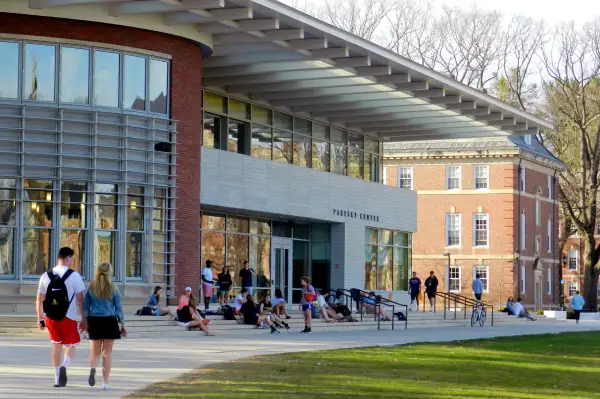More Colleges Are Going 'No Loan' to Help Students Graduate Debt-Free

Amid a heated national debate about the financial burden of student loans and the prospects of loan forgiveness, some colleges and universities are taking matters into their own hands and eliminating loans entirely.
Last month, Williams College, an exclusive liberal arts college in western Massachusetts, announced that it would implement the country’s first “all-grant” financial aid program this coming fall semester. That means no loans and no work-study requirements — just cash awards.
“Williams will simply replace loans and required campus jobs and summer work with an equivalent amount in grants,” Williams President Maud Mandel said in a public letter.
In doing so, Williams joins a small, though growing, group of colleges. In the past year, at least six colleges have either launched new no-loan policies or expanded their existing ones.
At Williams, Mandel said the changes will benefit a little over half of the college’s student body — some 1,100 students. The college estimates that middle income families will get an extra $35,000 in grants over the course of four years as a result of the changes to its program. Williams was already no-loan for the lowest income students, but the college says those families will also benefit from an additional $16,000 in grants.
What are no-loan financial aid packages?
On the surface, the term “no-loan” is simple: It means students aren’t required to borrow money as part of their aid packages. But there are a few important details to keep in mind.
Generally, no-loan policies only apply to students who are awarded need-based financial aid by the college.
“But if you have no need,” says Paula Bishop, a CPA and college financial aid advisor, “it doesn't matter.” In other words: If the college doesn’t determine that you qualify for need-based aid based on your family’s financial situation, you’ll be ineligible for the expanded grants under these new policies.
Out of Williams’ 547 incoming freshmen in 2021, for instance, 59% applied for need-based aid but only 44% were determined to have financial need, according to data from the Common Data Set. Of the graduating class of 2021, roughly one third of students ended up taking out loans.
And not every no-loan policy applies to all students at a given college — most schools with these policies have no-loan financial aid packages only for students below a certain income threshold.
Which colleges have eliminated loans from financial aid packages
Williams says it’s the first college in the country to totally eliminate both loans and work study requirements from financial aid packages, but it’s certainly not the first college to do away with loans.
Princeton University axed loans from its financial aid program in 2001, and the school says more than 10,000 students have benefited from the decision over the last two decades. Roughly 20 additional colleges, including Brown University, Northwestern University and Pomona College, have since adopted no-loan policies for all students. In total, the Chronicle of Higher Education estimates that more than 75 schools have no-loan policies for either all students or students from lower income families.
It’s worth mentioning that the large majority of schools with no-loan policies tend to be small, private institutions with low acceptance rates. Prestigious colleges like Williams are so desirable that their loan policies alone aren't what's attracting students to apply, Bishop says. And despite the growing popularity of no-loan programs, that exclusivity means that the vast majority of college students in the United States will still attend colleges with loan-based financial aid packages.
Still, along with Williams, more no-loan policies are on the way. Last year, Ohio State University announced a ten-year fundraising plan that includes a debt-free degree program — a major milestone for a massive public university. While other public universities have limited no-loan programs, Ohio State is aiming to be the first that opens it up to all students, regardless of income or state residence.
Smith College has also announced that it will eliminate loans from its financial aid packages this coming fall, making it the first women's college to institute a no-loan program. Last summer, Colgate University said it would eliminate loans from financial aid packages for families with incomes less than $150,000.
What to know about no-loan financial aid
No-loan financial aid packages don’t preclude students from taking out loans or working on-campus jobs if they want to — and there’s a lot of reasons why students may want (or need) to.
The financial aid formulas are based on financial information from two years prior, says Bishop, and that doesn’t always reflect a family’s financial situation in the present. There are also school-related expenses that aid packages may not cover, like childcare or room and board.
Plus, many families complain that the prices the financial aid formulas predict they can pay are still unaffordable. If, for example, a school’s formula estimates your family can afford to pay $15,000 a year out of savings and current income, but you can’t swing that, then loans may be one of the only options you have.
More from Money
Is Student Loan Forgiveness Finally Coming? Here's What We Know for Sure
All These Colleges Have Now Gone 'Loan-Free' to Help Keep Students Out of Debt
Millions of Borrowers Behind on Student Loan Payments Just Got a 'Fresh Start'


